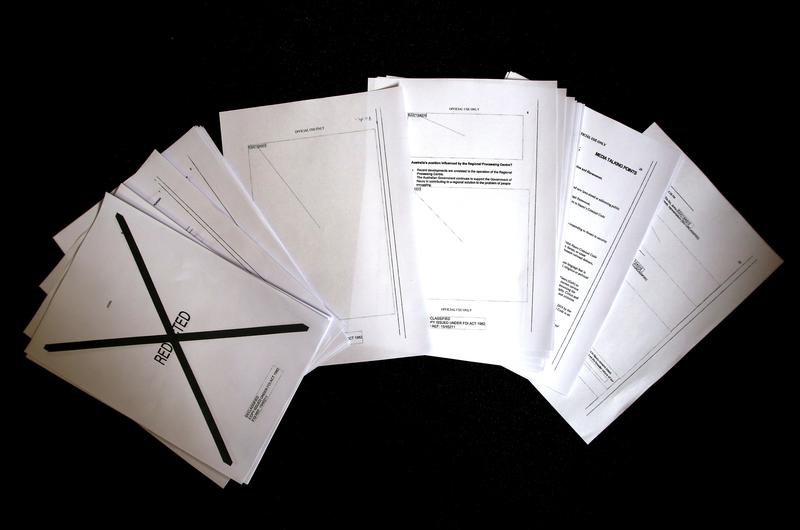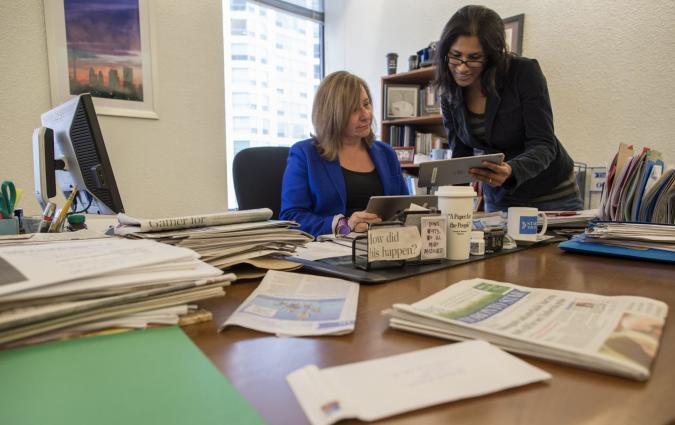In this piece
How to unlock the potential of freedom of information requests in your newsroom

Documents, including diplomatic cables and classified departmental emails, obtained by Reuters under the Australian Freedom of Information Act. REUTERS/David Gray
In this piece
Stage 1: Grow expertise through training and hiring | Stage 2: Share your requests for information, responses and data | Stage 3: Use a lawyer when you need to | Stage 4: Build your own databases | Stage 5: Use failed FOI requests as a topic of news coverageLess than 50% of journalists in Brazil have ever used the Freedom of Information (FOI) law to get access to documents or data for a story. When used correctly, this law not only encourages transparency from those in power, but it can yield huge investigative scoops.
I spent my time at the Reuters Institute analysing the results of a nationwide survey of journalists in Brazil about why they do (and do not) use the FOI law in their work. Then I interviewed journalists from around the country about their experiences using the law.
The result is a paper full of strategies you can use in your own newsroom you can download here). If you prefer the summary, here are the five stages of making better use of FOI in your newsroom:
Stage 1: Grow expertise through training and hiring
Not every newsroom will have the resources to hire a full-time FOI expert, as the Washington Post has done. This doesn't mean you can't encourage your journalists to take training, and give those who are interested the time to specialise in filing public requests. It’s not unlike the way many journalists spent time learning about social media or search engine optimisation. A little training for everyone went a long way, but encouraging one person with an aptitude to specialise in the topic will increase your chances of obtaining data and documents, and improve the workflow of your newsroom.
Stage 2: Share your requests for information, responses and data
Be transparent with your audience about stories obtained through FOI requests: how many requests it took, to whom, and for what. Share links to all the data or documents received. This will help your audience understand how the story was obtained, and may improve audience trust.
There is another advantage to sharing data received freely: the hive mind. Getting data and documents through FOI laws takes a lot of work and time, and we’re not always going to use all the material we've received. It is possible that someone else will see different uses or implications of a single document or a database.
The same principle of transparency should apply in your newsroom: sharing with colleagues will prevent unnecessary requests, and may help journalists learn request techniques and contacts from each other.
Stage 3: Use a lawyer when you need to
More and more exceptions and creative interpretations of the law are being used to deny access to public data. This means that for the journalist it is not enough just to ask for information. Sometimes it is necessary to fight for it. Keep clear lines of communication between your newsroom and your legal department so that they can escalate when they need to. Remember: legal action does not only entail filing a lawsuit. You can also report non-compliance with the law to oversight bodies, such as audit courts and public prosecutors.
Stage 4: Build your own databases
It may not always be possible to get public data through a FOI request. Sometimes it is necessary to collect your own data from scratch. If a request is denied, ask yourself: what motivated the denial? And how can I gather this data myself?
Stage 5: Use failed FOI requests as a topic of news coverage
Just as public security and health are core reporting issues, transparency is a beat that can also lead to impactful stories. And remember: FOI is a public policy that must be used to remain effective and impactful. Journalists should be the main protectors of these laws.




